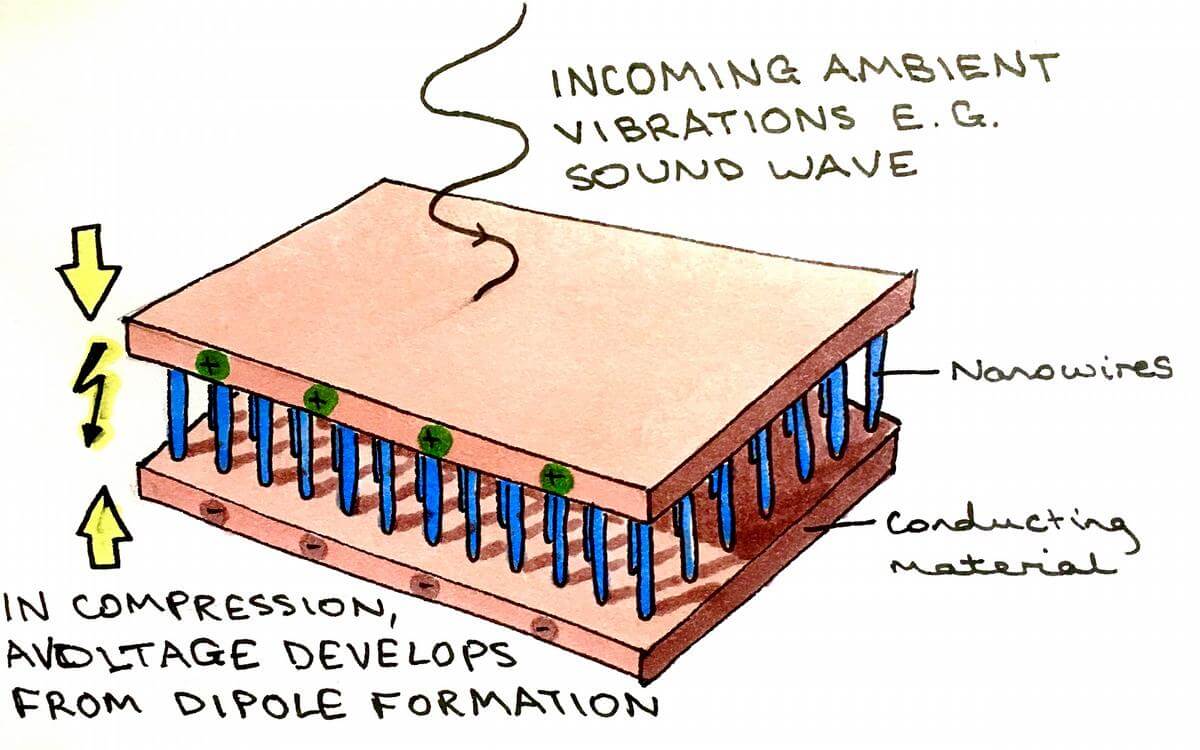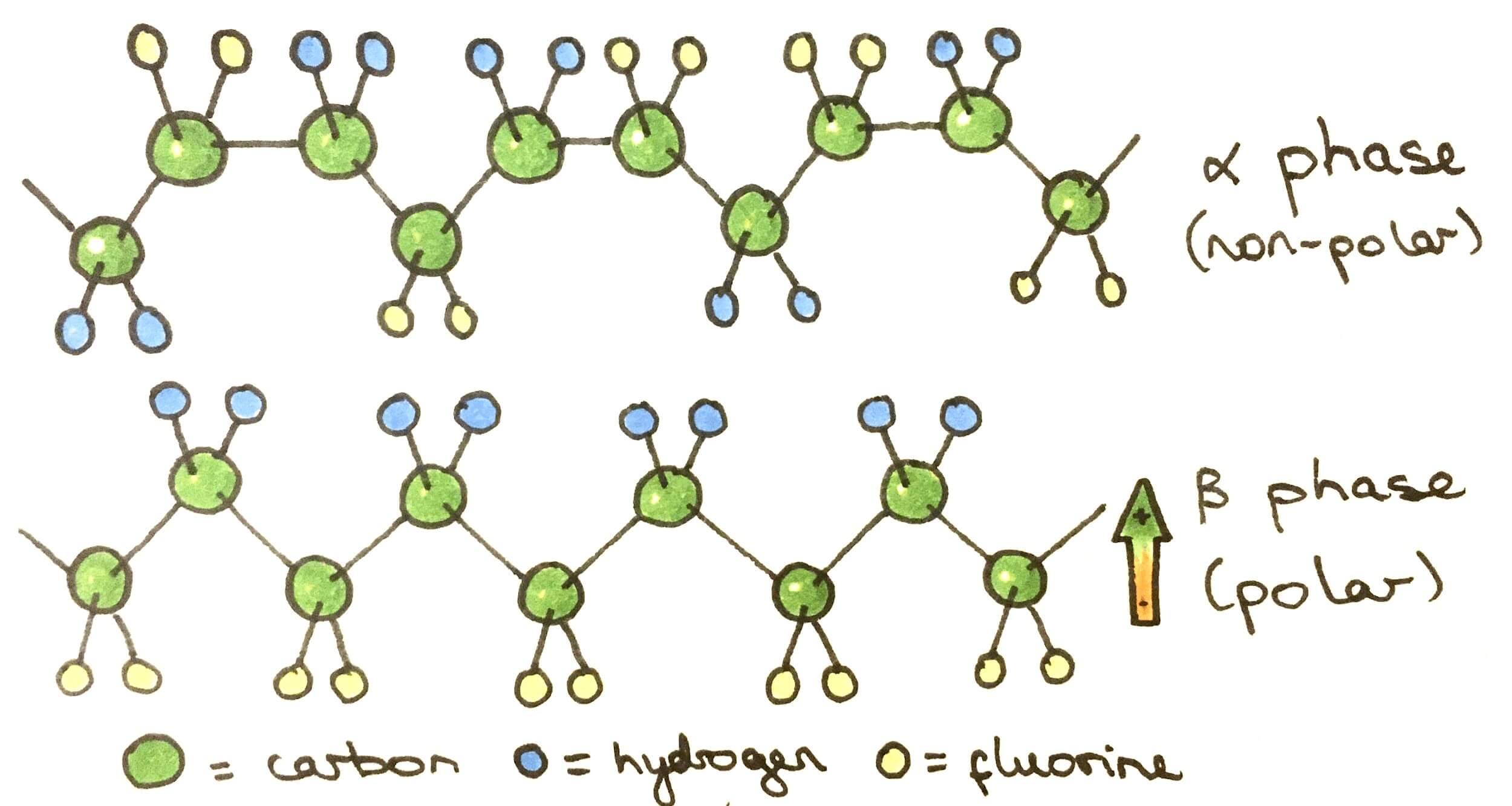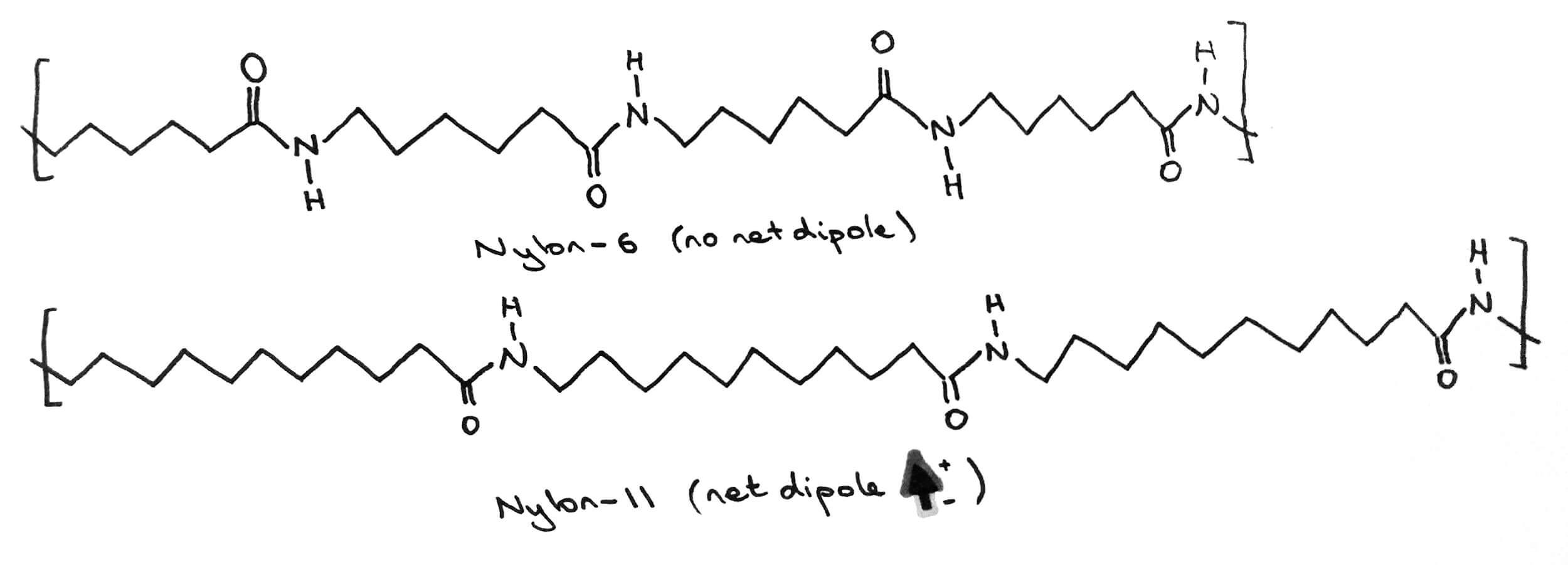TUESDAY, 1 SEPTEMBER 2020
You can’t get energy from nothing. This is perhaps one of the most well-known and fundamental ideas in science. However nanogenerators, which harness their energy from ambient vibrations one billionth of a meter in amplitude, seem to get pretty close. These tiny devices could soon be used in self-powered electronic devices, such as biomedical implants and environmental monitoring technologies, as part of what has come to be known as ‘the Internet of Things’. This is the idea that devices can be linked up to exchange information without the need for any human interference: an automated World Wide Web.Nanogenerators contain an array of nano-scale wires (with lengths of magnitude 10⁻⁹ m) that allow a circuit to generate current when a periodic force or a change in temperature is applied from ambient vibrations, tiny movements which are present due to everyday phenomena such as walking, talking, moving engines and wind. To quantify this, a vibration with an amplitude of just 0.1nm would cause a 1% strain in a 10nm nanowire! These tiny vibrations are everywhere, in sound waves or wind, but as yet are entirely unexploited, and without harnessing they are simply dissipated as heat.
The generation of a current in a nanogenerator can be achieved by the piezoelectric, triboelectric or pyroelectric effects, which are electrical phenomena stemming from physical properties like crystal structure. It is the former effect that was the first to be applied to nanogenerators in 2006 and the one that I will focus on here. After understanding the fundamentals of the piezoelectric effect, it becomes clear that several materials fit the bill. However, some will be more appropriate than others for certain applications. Here, I provide a whistle-stop tour of the kinds of considerations that take place in nanogenerator material science, exploring the exciting nano-technologies that sit on our horizon.
The piezoelectric effect was discovered in 1880 by Paul-Jacques and Pierre Curie. Since then, it has widely been used to convert mechanical energy to electrical. In 2006, Jinhui Song and his team successfully constructed the first working nanowire arrays that they had built from zinc oxide (ZnO) which used the energy of mechanical vibrations to generate electrical current, forming the building block of the modern day nanogenerator. Since then, many other materials have been used such as lead zirconate titanate (PZT) and barium titanate. These all work in the same way as ZnO as they have the same crystal structure.
 A simplified nanogenerator cell in which a voltage is developed across a nanowire array.
A simplified nanogenerator cell in which a voltage is developed across a nanowire array.Whilst the original materials suggested for these nanogenerators were inorganic, there are also promising possibilities in organic materials (those composed of hydrogen and carbon chains) as many have inherent flexibility, giving them greater potential to be wearable or used as biomedical implants. Polyvinylidene fluoride (PVDF), which has been known to possess piezoelectric properties since 1970, is an excellent example of such an organic material. PVDF is only piezoelectric in its semicrystalline beta phase. In this phase, the fluorine atoms are all aligned on the same side of the molecule, giving it a large net dipole so that it does not have a centre of symmetry. When the material is stretched and these chains align, the dipoles line up such that the material overall becomes charged negatively at one end and positively at the other.
PVDF nanowires have good mechanical properties and chemical stability as well as sharing a similar strength of piezoelectric ability with the inorganic materials explored above. The main disadvantage of PVDF and its copolymers is their relatively low Curie temperatures (the temperature above which a material is no longer piezoelectric) and melting points (110 and 150°C respectively for PVDF), which limit the applications of the nanogenerators to ambient settings.
 Two of the possible conformations of PVDF polymer chains. The polar beta phase is piezoelectric.
Two of the possible conformations of PVDF polymer chains. The polar beta phase is piezoelectric.A final polymer of note for piezoelectric nanogenerator applications is poly-L-lactic acid (PLLA). This polymer, usually made from corn starch, is widely known for its biodegradable properties. Its piezoelectricity is slightly different from that of the other two polymers in that it is shear: the direction of the voltage generated in the sample is perpendicular to the applied force . This isn’t yet well understood but is believed to be linked to the helical conformation of polymer chains in PLLA. The great thing about PLLA is that it is biocompatible since it is naturally found in the body and so could be successfully used for tissue implants and drug-delivery systems. There is thus great potential for using PLLA nanogenerator technology for self-powered monitoring implants.

An example of an even nylon (Nylon-6) and an odd nylon (Nylon-11). It can be seen that the electron withdrawing C=O groups are only on the same side, generating a net dipole, in the odd case.
Article written by Pip Knight, second year Natural Sciences undergraduate at Churchill College. Artwork by Natalie Saideman, 4th year Veterinary Medicine student at Selwyn College.
- [back]The origins of the latter are somewhat complex and based on Maxwell’s displacement current theory, if you are interested to read more! This paper contains a very detailed description of the physics: Wang, Z. L. (2017). On Maxwell's displacement current for energy and sensors: the origin of nanogenerators. Materials Today, 20(2), 74-82.
- [back]If you’re interested in triboelectric nanogenerators, a good place to start is this article explaining the triboelectric effect.
References:
- Jing, Q., & Kar-Narayan, S. (2018). Nanostructured polymer-based piezoelectric and triboelectric materials and devices for energy harvesting applications. Journal of Physics D: Applied Physics, 51(30), 303001.
- Li, Z., Zheng, Q., Wang, Z. L., & Li, Z. (2020). Nanogenerator-Based Self-Powered Sensors for Wearable and Implantable Electronics. Research, 2020, 8710686.
- Pawar, R. P., Tekale, S. U., Shisodia, S. U., Totre, J. T., & Domb, A. J. (2014). Biomedical applications of poly(lactic acid). Recent patents on regenerative medicine, 4(1), 40-51.
- Sessler, G. M. (1981). Piezoelectricity in polyvinylidenefluoride. The Journal of the Acoustical Society of America, 70(6), 1596-1608.
- Wang, Z. L. (2017). On Maxwell's displacement current for energy and sensors: the origin of nanogenerators. Materials Today, 20(2), 74-82.
